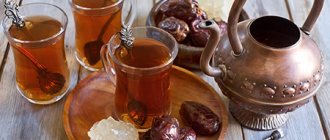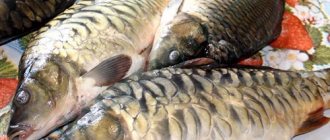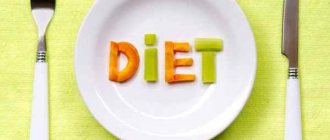People whose pancreatic parenchyma is affected by pancreatitis are advised to select foods for their daily diet as carefully as possible. In the chronic form, stable remission should be achieved. This is the only way to expand the list of permitted products. In case of exacerbation, a strict diet is required. Many patients with inflammation ask doctors whether they can eat shrimp and other seafood for pancreatitis. The gastroenterologist, taking into account the patient’s condition, will explain the benefits and harms of such products.
Boiled product
Benefits of shrimp
Shrimp are allowed in almost any therapeutic diet, since their meat contains little fat and protein, which is easily absorbed by the body. In addition, the product contains a lot of vitamins, as well as iodine, iron, potassium, magnesium and other trace elements that support the functioning of internal organs and muscles.
You can prepare many healthy and tasty dishes from shrimp. They can be steamed, boiled and baked, which is especially important during a diet. In addition, the calorie content of the shrimp themselves is very low.
Beneficial properties and potential harm
In addition to dietary protein, shrimp are rich in many vitamins, amino acids and other beneficial substances. Therefore, this product strengthens the immune system and supports the normal functioning of internal organs. This is facilitated by fat-soluble vitamins A, E, K, D, a record content of iodine (110 mcg per 100 g), potassium, calcium, magnesium, sodium, phosphorus, copper, fluorine, iron, zinc.
The balanced composition of seafood has a beneficial effect on the body of a person suffering from pancreatitis:
- Seafood for pancreatitis - all the pros and cons
- restores damaged pancreatic tissue;
- normalizes the balance of pancreatic enzyme synthesis;
- stimulates the thyroid gland;
- removes excess cholesterol from the body;
- improves metabolism;
- strengthens blood vessels, muscle tissue and bones.
Shrimp meat is a dietary dish, low in calories - only 95 kcal per 100 g of product.
Along with useful elements, shrimp also contain harmful substances and can be dangerous. This:
- salts of heavy metals;
- radioactive substances;
- cholesterol in large quantities.
In addition, the dense texture of crustaceans, due to the chitin contained in the shell, negatively affects the digestion process. Therefore, shrimp are difficult food for the gastrointestinal tract.
Shrimp for acute pancreatitis
Is it possible to eat shrimp if there are inflammatory processes in the internal organs? Shrimp meat is well absorbed by a healthy body, however, during periods of exacerbation of inflammation of the pancreas, it is better to avoid them, since the internal organs in this case will work to the limit, which can cause a deterioration in the patient’s condition. As soon as the main symptoms of an exacerbation can be stopped and a lasting result from treatment can be obtained, they can begin to be administered in small portions.
In case of a disease such as pancreatitis during the recovery period, shrimp can help in treating the disease. This is due to the following properties of the product:
- Meat protein, which has high nutritional value, has a beneficial effect on the condition of the pancreas.
- The product can significantly improve the nutritional value during a diet.
- Omega-3 fatty acids and astaxanthin can reduce inflammation.
You can achieve the greatest safety and quality of the product if you boil or stew the shrimp. It is also useful to add pureed meat to porridge and vegetable dishes.
Shrimp for chronic pancreatitis
To restore pancreatic tissue, you need a large amount of light and high-quality protein. However, shrimp can also be added to the main diet during the period of remission. The maximum amount is 350 grams of product per day.
You can cook shrimp almost any way you like. However, fried foods should be avoided. The best option here would be pureed shrimp, boiled, stewed, or as a soup base or an addition to a vegetable or cereal side dish.
Beneficial properties and potential harm
In addition to dietary protein, shrimp are rich in many vitamins, amino acids and other beneficial substances. Therefore, this product strengthens the immune system and supports the normal functioning of internal organs. This is facilitated by fat-soluble vitamins A, E, K, D, a record content of iodine (110 mcg per 100 g), potassium, calcium, magnesium, sodium, phosphorus, copper, fluorine, iron, zinc.
The balanced composition of seafood has a beneficial effect on the body of a person suffering from pancreatitis:
- restores damaged pancreatic tissue;
- normalizes the balance of pancreatic enzyme synthesis;
- stimulates the thyroid gland;
- removes excess cholesterol from the body;
- improves metabolism;
- strengthens blood vessels, muscle tissue and bones.
The balanced composition of seafood restores damaged pancreatic tissue. Eating shrimp helps normalize the balance of pancreatic enzyme synthesis. In addition, shrimp meat, filled with useful substances, stimulates the thyroid gland.
Shrimp meat is a dietary dish, low in calories - only 95 kcal per 100 g of product.
Along with useful elements, shrimp also contain harmful substances and can be dangerous. This:
- salts of heavy metals;
- radioactive substances;
- cholesterol in large quantities.
In addition, the dense texture of crustaceans, due to the chitin contained in the shell, negatively affects the digestion process. Therefore, shrimp are difficult food for the gastrointestinal tract.
Other seafood allowed for pancreatitis
In both acute and chronic cases of pancreatitis, seafood is not recommended to be consumed during the period of exacerbation. In this case, it is advisable to give preference to lean fish. So, you can safely include in the diet menu:
- perch;
- pollock;
- pike;
- sturgeon;
- pike perch.
Seafood for pancreatitis can be steamed, stewed, boiled, baked. You can also make cutlets and meatballs without adding oil.
Mayonnaise and other harmful and fatty dressings are often added to squid salads. Squids themselves do not harm people suffering from pancreatic inflammation (only during remission), however, such dishes should be excluded from their diet.
You should also eat crab sticks with caution, as they contain a large amount of harmful additives that improve the consistency and taste. Moreover, despite the fact that they are made from minced fish, all useful substances are removed from the main ingredients during the production process. In addition, in the cheapest crab sticks, regular fish protein is replaced with soy protein to reduce cost, and it is contraindicated for pancreatic diseases.
Seafood julienne.
To prepare a hot second course you will need:
- Shrimp 200-300 gr.
- Butter 100 gr.
- Cream
- Flour 2-3 tablespoons
Preparation:
- To prepare the sauce, you need to place the flour in a heated dry frying pan and stir for about a minute.
- Then butter and cream are placed in a saucepan and brought to a boil.
- The sauce is ready.
- Next you need to prepare the seafood.
- Thawed shrimp are poured with boiling water for three minutes, then cooled and cleaned.
- Prepared crustaceans are placed in molds and filled with sauce.
- The julienne is sprinkled with cheese on top and placed in an oven preheated to 200 degrees for 10 minutes.
Shrimp lovers should not forget that you should not overeat them. Despite all its benefits for the body, seafood is classified as an allergy-causing product. Therefore, before eating seafood for the first time, you need to eat a small dose and see how your body reacts. If no side effects are noted, a patient with pancreatitis can safely add shrimp to the list of permitted foods.
To avoid aggravation after eating shrimp, you need to adhere to the following rules: during moments of acute inflammation of the pancreas, it is not recommended to eat crustacean foods. After an exacerbation of pancreatitis, shrimp can only be eaten pureed, and during the period of remission it is allowed to eat boiled, stewed and baked crustaceans. By following these simple rules, you can diversify your menu and not worry about your pancreas.
Modern opportunities make it possible to consume these seafood almost every day, but can patients with diseases of the digestive system allow themselves to do this? Are shrimp good for pancreatitis?
How to choose seafood for pancreatic diseases?
When choosing seafood, the first thing you need to pay attention to is the fat content. In this regard, it is dangerous to purchase so-called sea cocktails, since they may contain harmful and even dangerous ingredients for patients with pancreatitis and cholecystitis.
When purchasing finished products and semi-finished products (for example, fish cutlets, crab sticks, minced fish), you need to pay close attention to the composition and nutritional value. If the product contains too high a percentage of fat or vegetable protein, it is better to refrain from purchasing. It is also important to pay attention to whether it contains any components prohibited during the diet. Battered and deep-fried shrimp can be dangerous.
It is best to buy fresh frozen fish and cook it yourself. But at the same time, it is important to pay attention to the expiration date of the product and ensure that the packaging is in presentation, and the seafood itself is not covered with yellow spots, which characterize spoiled goods or products in violation of storage conditions. Low-quality products can be detrimental to both the gallbladder and the entire digestive tract.
Nuances of preparing the product
How should you cook shrimp for pancreatitis?
It was already mentioned above that the technology for preparing shrimp depends on the clinical presentation of pancreatitis. Experts point out that you don’t need to thoroughly chop the shrimp, boiling or baking is enough, and it doesn’t have to be served in its pure form - you can use them to prepare a variety of dietary salads, first courses and side dishes. By the way, 100 g of shrimp meat contains only 95 calories. Preparing this delicacy is not particularly difficult, the main thing is to follow the peculiarities of dietary technology. As for main courses, seafood goes well with many vegetables:
- Potato.
- Zucchini.
- Carrot.
- Broccoli.
- Cauliflower.
Frozen shrimp are washed under running water to remove excess ice and dirt. Next, they are dipped in boiling salted or lightly seasoned water (the volume of liquid is 2 times the volume of seafood) and boiled until tender. Cooking time depends on the size of the shrimp - the larger they are, the longer it will take to cook, but not less than 3-5 minutes. Cooked shrimp usually float to the surface, their meat acquires a delicate color, and the shell becomes slightly transparent.
We offer several options for recipes for dishes that contain crustaceans.
Shrimp soup
A gentle dietary soup with shrimp will help not only expand the menu of a patient with pancreatic insufficiency, but also reinforce a weakened body with the necessary nutrients.
Ingredients:
- Potatoes – 2-3 pcs.
- Shrimp – 300 g
- Milk – 300 ml.
- Zucchini – 150 g.
- Water – 200 ml.
- Salt – a pinch.
Peel the zucchini and potatoes and chop them on a coarse grater.
Prepare the shrimp, depending on their type, so boil the unpeeled frozen ones with boiling water for 2 minutes, cool and peel. Wash the crustaceans and pass through a meat grinder, or grind with a blender.
Pour water and milk into a saucepan and bring to a boil. Add vegetables to the boiling liquid and simmer for 15 minutes. When the vegetables are ready, add a drop of salt, shrimp and simmer for another 5 minutes.
Serve the finished dish with crackers and herbs.
Salad with shrimp
Diet salad with shrimp has a pleasant taste and is a great way to diversify the daily diet of a sick person.
Ingredients:
- Shrimp – 250 g
- Quail eggs – 8 pcs.
- Adyghe cheese – 100 g
- Fresh cucumber – 1 pc.
- Sour cream – 2 tbsp.
Pour boiling water over the shrimp and boil for 5-10 minutes, depending on their size. Boil eggs, cut into small cubes. Grate the cheese on a coarse grater. Peel the cucumber and remove the stems and grate it on a grater with large holes.
Combine all products, season with low-fat sour cream or natural yoghurt, mix. Sprinkle with fresh herbs before serving.
Salad with seafood and vegetables
This wonderful salad has a delicate taste and is perfect for the diet table for people with an inflamed pancreas.
Ingredients:
- Shrimp – 300 g
- Carrots – 1 pc.
- Potatoes – 3 pcs.
- Egg – 2 pcs.
- Sour cream – 2 tbsp.
Boil the shrimp for about 10 minutes, peel and cut into cubes. Boil carrots until soft, cut into cubes. Boil the potatoes, cut into small pieces. Finely chop the boiled eggs.
Combine all ingredients, add sour cream and mix.
Julienne with shrimp
This dish will be an excellent addition to the treatment table for pancreatic pathology.
To prepare it you need a minimum set of products. Ingredients:
- Shrimp – 300 g
- Cream.
- Flour – 2-3 tbsp.
- Cheese - to taste.
- Butter – 100 g
Heat a dry frying pan, add the specified amount of flour and stir constantly for 1 minute. Add butter and cream to the flour and bring to a boil.
Steam frozen shrimp with boiling water for 2-3 minutes, cool, and peel. Place the seafood in small molds and pour in the prepared sauce. Sprinkle with grated cheese on top and bake in the oven for 10 minutes at 180 degrees.











